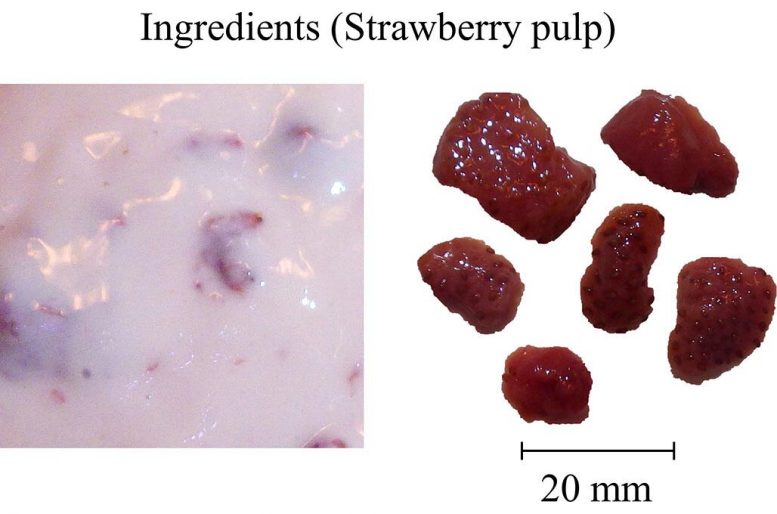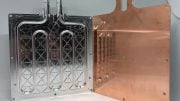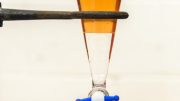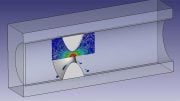
The texture of food is an important part of enjoying food. In order to completely understand these properties, better methods for testing are required to capture the motion inside liquid materials, especially in the case of foods that are complex liquids, like gelled desserts. In a study in the Physics of Fluids, researchers introduce an updated method that can measure linear viscoelasticity and phase lag simultaneously in an opaque liquid, capturing information about complex rheological properties. The researchers used a popular Japanese dessert called Fruiche, which includes fruit pulp and whole milk that transforms into a gelled form with an egg carton-shaped structure. Credit: Yoshida et al.
To make better-tasting desserts, this ultrasonic spinning rheometry method includes velocity profiling of complex liquids in food products in order to more accurately capture dynamics inside the material.
The texture of food, including properties that determine how consumers experience biting and swallowing, is an important part of the development of more enjoyable foods. In order to completely understand these properties, better methods and devices for testing are required to capture the motion inside liquid materials, especially in the case of foods that are complex liquids, like gelled desserts.
Testing devices have been improved using different geometries in the testing chamber, and more recently, better results have been achieved using information from rheological testing coupled with results from other tests, such as inner visualization techniques and ultrasonic imaging. But traditional methods have been unable to produce information about time-dependent properties.
In a study published this week in Physics of Fluids, from AIP Publishing, Taiki Yoshida, Yuji Tasaka and Peter Fischer introduce an updated method that can measure linear viscoelasticity and phase lag simultaneously in an opaque liquid. The ultrasonic spinning rheometry method they developed substitutes velocity profiles of food into the equation of motion to capture information about complex rheological properties.
The researchers used a popular Japanese dessert called Fruiche, which includes fruit pulp and whole milk that transforms into a gelled form with an egg carton-shaped structure. The complexity of this liquid includes properties that are hard to measure with traditional rheometry methods because of the effect of shear history, shear banding, shear localization, wall slip, and elastic instability.
“Evaluation of food rheology with time dependence is a challenging target,” Yoshida said. “Based on the equation of motion, the ultrasonic spinning rheometry method can evaluate instantaneous rheological properties from the measured velocity profiles, so it can present true rheological properties and their time dependence from the perspective of physics of fluids.”
The updated method has applications in chemical engineering for understanding polymerization and dispersion densities, as well as in complex fluids such as clay, with applications in civil engineering and cosmetics. The researchers plan to further advance the method to include more points at which information can be gathered about the invisible properties of complex liquids. They also plan to further develop the industrial aspects of the technique, including in-line rheometry for test samples flowing in a pipe.
###
Reference: “Ultrasonic spinning rheometry test on the rheology of gelled food for making better tasting desserts” by Taiki Yoshida, Yuji Tasaka and Peter Fischer., 1 November 2019, Physics of Fluids.
DOI: 10.1063/1.5122874









Be the first to comment on "Better-Tasting Desserts: Complex Fluid Dynamics Update Century-Old Food Testing Method"